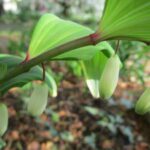magic beans
I plant scarlet runner beans for their flowers – all the beauty of sweet peas with none of the high maintenance. Of course they are not fragrant, but nothing in this life is perfect.
If you plant them as a crop, and during favorable years they do produce, don’t pick them green, you are not doing yourself or the beans any favors.
There are three types of beans, based on their use: snap, shell and dry.
Any bean can function as a snap bean, as long as you pick it very young, while the pod still snaps easily when you bend it. Considering how large scarlet runner beans get, it doesn’t seem like the best use for them.
Shell beans can be used green or shelled for the soft beans inside, and most of the stringy genes have been bred out of them during many hybridizations. These varieties include broad beans, Lima beans and French haricots.
Dry beans are stringy, and runner beans are the stringiest of them all. You can make rope out of those suckers, they are long, tough and impossible to chew. Even the shells are relatively unpleasant if you want to consume them green, their rough fuzzy texture does not agree with one’s palate and kind of ruins their taste, which is not bad, as green beans go.
You have to wait until the shells are dry to really appreciate runner beans, whose offspring grows to gargantuan size and sports a calico pattern in white and deep purple, almost too beautiful to eat. This is an heirloom variety and will come true from seed, so do keep some of those pretty beans for next year’s planting.
As I was admiring my valiant flower bearing vines I couldn’t help but notice that they escaped the trellis and clambered their way up a phone wire and are now headed for the second floor. It’s going to be an interesting experience trying to pull their dried up stems from there when I get to the fall cleaning.




 Previous Post
Previous Post Next Post
Next Post




